#tsigane
Text
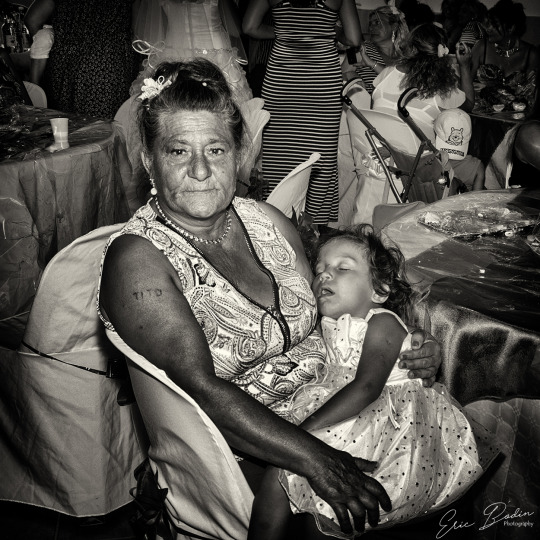
Générations Tsiganes
©2015 : EBodinPhotography
Site : https://ebodinphotography.com/
(pensez à laisser un message dans le livre d'or)
#gitan#gipsy#grandmere#tsigane#tzigane#sieste#peuple#voyageur#nb#bw#mariage#photo#photo06#photonice#photonice06#photopaca#ebodin#ericbodin#ebodinphotography#photographe
2 notes
·
View notes
Text
28 juillet 22 | crucifiction, clous de l'errance, 3 | 34
28 juillet 22 | crucifiction, clous de l’errance, 3 | 34
https://fr.wikipedia.org/wiki/Saints_Clous
613. Le lien de C. Macquet avec la culture tsigane, on l’a vu, est un lien généalogique : Louis, le grand-père maternel de l’auteur, est gitan. La construction d’une figure féminine imaginaire, rappelons-le, s’appuie sur tant sur la culte du Nazaréen noir, sur la caresse érotique de la poitrine du buste du Christ et des statues khmères, de Notre-Dame du…

View On WordPress
#bord#Clous de la Croix#emet#golem#hébéphrénie#Juif errant#met#Michael Snow#objet petit a#réinjection#Tsiganes
0 notes
Text
Jonathan's description of the Romani people is certainly full of racist stereotypes. But it also reads to me as something he's reciting; as he says, he has notes of them "in my book." His words here seem to be him copying down something he's read in a book (whether here or in his research before he left). It's completely uncritical, but aligns with his earlier notes about history.
Even though he writes that they "attach themselves as a rule to some noble" he's not certain that they will turn him in to Dracula. He guards against the possibility of course, with his shorthand, and does mention that possibility of "should [the letters] not send," but he still willingly took the risk. Of course, it's really the only thing he can do, so even if he fully believes the stereotypes he's got to try anyway. Certainly though, I think he would be willing to alter his beliefs should they act in a way that contradicts what he has heard.
From his perspective, they... don't, at least today. Dracula coming back with the letters could easily be explained by them taking his money and then giving him up. But I choose to believe that they really did try to help him. They might have brought Dracula the letters because he's the only one who knows English. Or, more likely if they know he is a vampire and work for him at least partially out of fear, they intended to hide it but Dracula heard Jonathan calling down to them/saw him throwing something and asked about it. Or so on. There are several different ways they could have wanted to help Jonathan but still have been forced to give his messages to the Count. There's no evidence against such an interpretation, and it is not only better because it's not a racist stereotype, but it also fits the themes of the story and the pattern of humans trying to help one another as well.
However, I can't help but note that Dracula also calls them "Szgany". I didn't know this for a long time, but at some point last year I heard that term is not referring to a specific group of people. Instead it appears to be a phonetic spelling of a slur:
Cigan/Tsigan
Term used to describe Roma. Amongst most Romani communities this is a highly offensive racial slur. It originates from the Greek word "atsinganoi" meaning "untouchable". (from the European Roma Rights Centre)
This is awful, but perfectly in character for Dracula. He looks down on humans in general, and is clearly dismissive of 'peasants' at other times. It also would make sense for him to intentionally reinforce negative stereotypes about them in order to degrade any trust between Jonathan and other people. He did something similar when he called the other locals superstitious peasants.
It's possible that at least some of Jonathan's information about these people comes from Dracula himself, or at least has been 'confirmed' by him. Even if that's not the case, it makes sense that Dracula would be aware of any negative reputation and I could see him playing into it in any conversation or potentially in any interactions he thinks Jonathan can see.
#dracula daily#count dracula#jonathan harker#dracula locals#slur#being discussed#i assume jonathan got the term from his books also without wondering about it#but then again as we see in that one lucy entry these characters are certainly not immune to casual racism themselves
49 notes
·
View notes
Text
“My name in his throat like a jewel.”
— Cecilia Woloch, from Tsigan: The Gypsy Poem.
#dark academia#literature#poetry#quotes#poem#light academia#romance#romantic academia#love quotes#memes
812 notes
·
View notes
Text
'Gypsies' and 'Bohemians'* don't exist, they are exonyms that can't be separated from the archetype created by European artists to sexualize Romani women and to glamorize the poverty Romani people live under because of oppression.
'Tsigans' and 'Zigeunern' don't exist, they are exonyms adopted in the judicial and political texts of Central European countries to justify the enslavement and genocide of Romani people.
Romani women aren't gypsy, aren't bohemian, aren't tsigan, aren't zigeuner, we are autonomous, individual beings, we don't exist for men's enjoyment and our lives shouldn't depend on what European States decide to do with us.
(*I am talking of the word Bohemian when used to refer to Romani people, not when it is correctly used to refer to the people who are from the region of Bohemia)
20 notes
·
View notes
Text
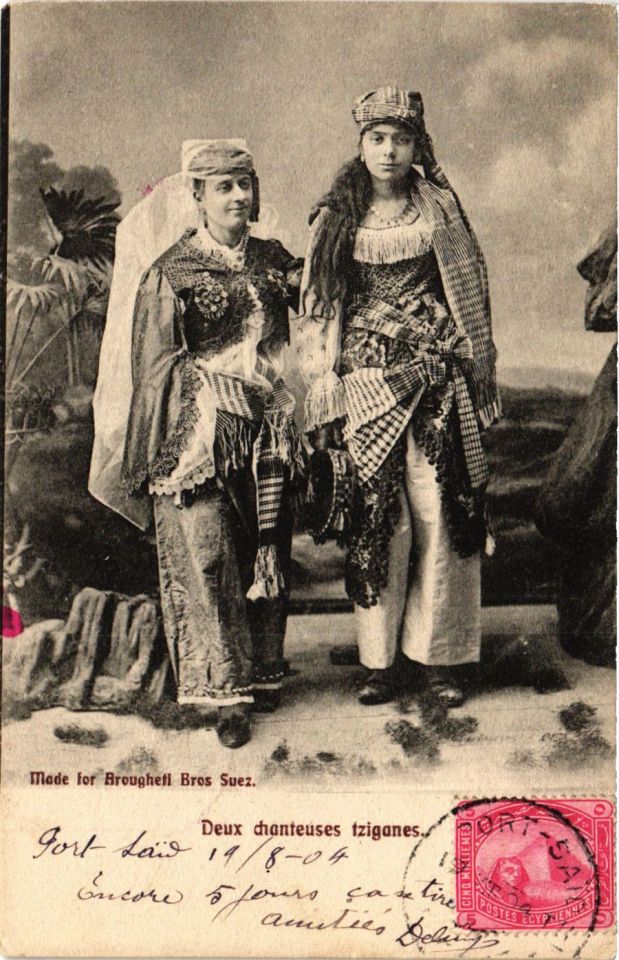
Tsigane singers from Egypt
French vintage postcard, mailed in 1904 to Paris
#historic#photo#briefkaart#vintage#1904#sepia#photography#egypt#carte postale#paris#postcard#mailed#postkarte#postal#tarjeta#ansichtskarte#french#old#ephemera#postkaart#tsigane#singers
15 notes
·
View notes
Text
do you want to listen to Du Son Dans La Roulotte radio that spotlights romani balkan & klezmer music & songs. with me.
10 notes
·
View notes
Text

Mardi 21 mai 2024.
Au siège de la FNASAT à Paris, concert de Kesaj Tchavé, groupe de chants et danses tsiganes fondé en 2000 par Ivan Akimov. Ivan va chercher les enfants tsiganes dans les bidonvilles pour les faire chanter et danser.
Je réédite le texte que j'avais écrit sur Ivan et les Kesaj Tchavé le 2 février 2012, il y a 12 ans alors que je lui rendais visite pendant un travail que je faisais sur les Roms en Europe.
"Nous allons à Kezmarok déjeuner avec Ivan*. Il fait un temps magnifique, les monts des Hauts Tatras sont dégagés et s’offrent à nos regards émerveillés. Dans l’après-midi, nous l’accompagnons dans un orphelinat pour assister à une répétition des Kesaj Tchavé, un groupe fondé par Ivan en l’an 2000. Il fait chanter et danser des jeunes Roms qui vivent dans des bidonvilles et des villages parmi les plus misérables de la région. Kesaj est le nom d’une fée tsigane qui dit que pour recevoir de l’amour, il faut d’abord savoir en donner. Tchavé signifie en langue romani « enfants ». Ivan se bat comme un lion pour les « enfants de kesaj »pour leur rendre une dignité volée par la vie et les hommes, les autres, ceux qui ont le pouvoir. La musique est un moyen pour y arriver. L’amour et l’intérêt que l’on leur porte aussi".
Ivan est toujours là, avec d'autres jeunes Roms. Douze années plus tard.*https://alain-keler.tumblr.com/post/16934544810/jeudi-2-février-a-700-heures-du-matin-il-fait
2 notes
·
View notes
Text
youtube
Rosy Wertheim (1888-1949) - Le tsigane dans la lune : for soprano, violin and piano (1916)
Irene Maessen, soprano
Ursula Schoch, violin
Marcel Worms, piano
2 notes
·
View notes
Photo
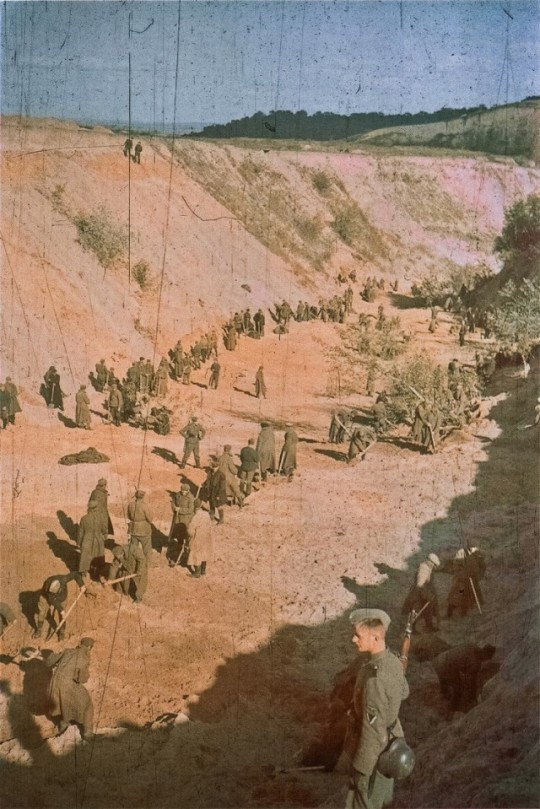
Des prisonniers de guerre soviétiques sont utilisés par les nazis pour recouvrir le charnier de Babi Yar - Ukraine - 1er octobre 1941
Photographe : Johannes Hähle
Dans le cadre de l'Opération Barbarossa, Kiev est conquise par la Wehrmacht le 19 septembre 1941. La ville est piégée de plus d'une dizaine de milliers de charges explosives et de mines actionnées par un commando du NKVD resté sur place. Le déluge de feu du 24 septembre fit des milliers de morts parmi les troupes allemandes.
Les juifs sont tenus pour responsables du chaos et le 28 septembre, un communiqué de l'administration nazie ordonne à tous les Juifs de Kiev et des environs (environ 120.000) de se présenter le lendemain, jour de Yom Kippour, munis de leurs papiers d’identité, d’argent, de leurs objets de valeurs, ainsi que de vêtements chauds, de linge, etc...
Le 29 septembre ils furent conduits au ravin de Babi Yar près de Kiev. Le ravin fait 150 mètres de longueur, 30 mètres de largeur et 15 mètres de profondeur. Les juifs traversent un corridor d'environ 1,5 mètre de large formé de soldats au coude à coude et de chiens, roués de coups de matraque et de bâton, puis forcés à se déshabiller et conduits au bord du ravin pour y être exécutés par les membres des Einsatzgruppen et des Ukrainiens nationalistes.
Environ 22.000 personnes sont tuées dès le premier jour, plus de 11.000 le deuxième jour. Les corps sont ensuite recouverts de terre par des prisonniers de guerre soviétiques. Jamais les nazis n'ont exterminés autant de monde en si peu de temps même dans les camps de concentration. Le massacre de Babi Yar est la plus grande extermination de juifs par balles : c'est la Shoah ukrainienne par balles.
Durant les deux années qui suivirent, près de 140.000 juifs, polonais, tsiganes, opposants aux nazis, malades mentaux, prisonniers de guerre, furent exécutés à la mitrailleuse ou enterrés vivants.
En août et septembre 1943, devant l'avancée des troupes russes, Paul Blobel à la tête du Kommando 1005 fait exhumer les corps pour les brûler et les faire ainsi disparaître.
Les autorités soviétiques ont effacé cette tragédie. La souffrance juive ne devait pas occulter la souffrance du peuple soviétique et le récit de la grande guerre patriotique. Le site a été remblayé dans les années 60 et accueille désormais un quartier résidentiel.
#WWII#Opération Barbarossa#Barbarossa Operation#Massacre de Babi Yar#Babi Yar massacre#Shoah#Babi Yar#Kiev#Kyiv#Ukraine#01/10/1941#10/1941#1941
9 notes
·
View notes
Text
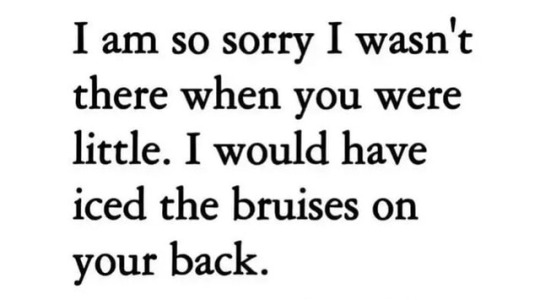

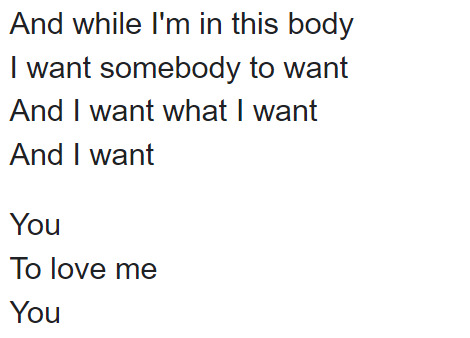





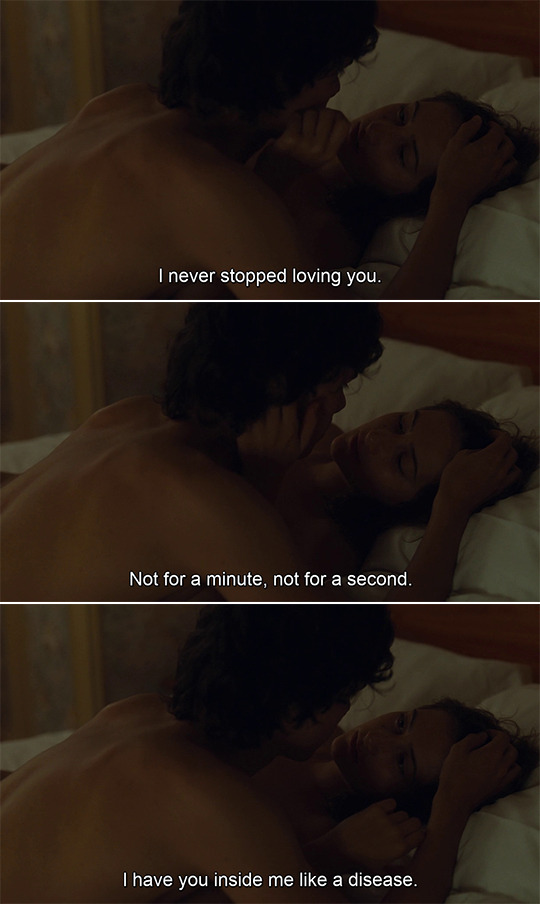
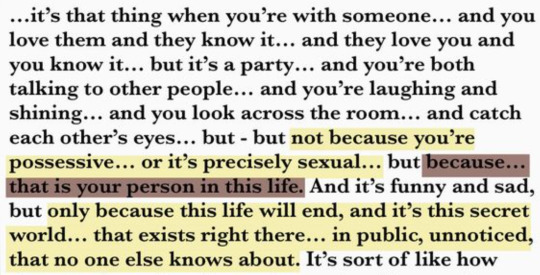




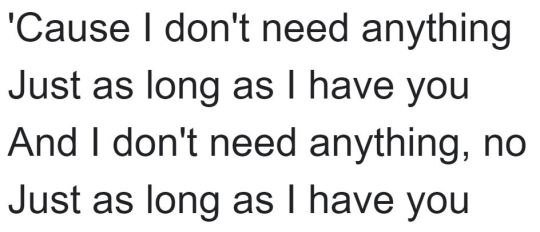


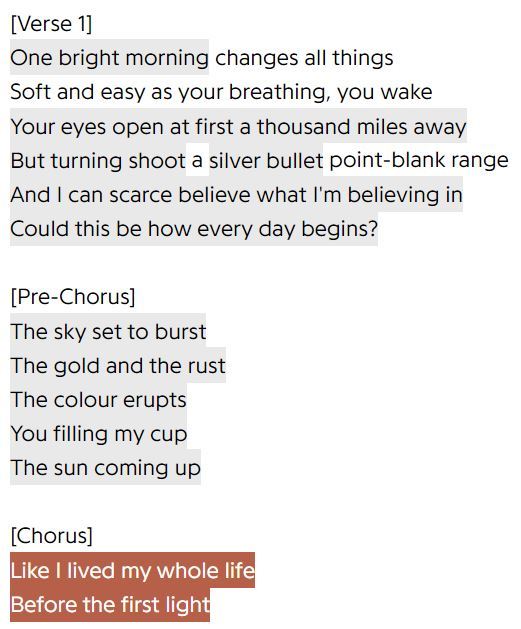
to die by your side, well, the pleasure, the privilege is mine.
— @imbalanceofpower.
unknown, pinterest / seeking a friend for the end of the world, dir. lorene scafaria / i want you to love me, fiona apple / a letter to gabriela mistral, doris dana / writing for this story to end before i begin another, jan heller levi / all i wanted, paramore / a house in nebraska, ethel cain / about you, the 1975 / goodbye first love, dir. mia hansen-løve / frances ha, dir. noah baumbach / a most violent year, dir. j. c. chandor / tsigan, cecilia woloch / watching you talk on the phone, i consider the empty space around atoms–, rhiannon mcgavin / in other worlds, margaret atwood / this place o' yours, the lathums / the contractor, dir. tarik saleh / your emergency contact has expired an emergency, chen chen / first light, hozier.
1 note
·
View note
Text
Tagged by @hxhhasmysoul , thank you.
1. Are you named after anyone?
I was supposed to be named after my grandma but some Tsigan man advised my mom to give me the name i have now.
2. When was the last time you cried?
Recently, i think! I was angry as hell and tried to suppress this anger.
3. Do you have kids?
No.
4. Do you use sarcasm a lot?
No.
5. What sports do you play/have you played?
I used to be a weak kid, so most of my "sports" were classic exercises in order to catch up with my classmates, mostly thanks to our teacher who valued the ammount of effort the student made during her classes more than natural abilities which motivated me a lot.
I also went at the swimming section when i was 8 and had a big success there untill one day suddenly i just stopped having enough oxigen and endurance during the swimming exercises. I don't know why it happened, everything went well and then at once i "turned into the sloth", as our trainer said.
At 15-16 i went to school's sambo section but our teacher never cared to teach me moves and specific for this subject exercises because i was the only girl in the section and he didn't like me personally (he would train us if i succeeded to bring other girls on his lessons but i didn't). So he trained only with the boys while giving me the tasks like to "run 30 minutes, then make 200 sit-ups, then 50 push-ups, then 100 body liftings, then ran 10 minuts, then 60 push-ups and etc and etc" untill time ends.
Sometimes he allowed me to do exercises with the boys but that were few times.
The only time he allowed me to do sparring (without knowing moves lol) i screwed up cause i got my hand in the grab and refused to give up even when the opponent threatened to break my arm. So yeah, he stopped us and never allowed me to spar again.
6. What’s the first thing you notice about other people?
Hard guestion. Maybe height? Voice intonation?
7. What’s your eye colour?
I dunno what colour this is. I just call it swamp.
8. Scary movies or happy endings?
Scary movies with happy ending 😈
9. Any special talents?
People call me a walking disaster XD
I can fall asleep everywhere, any time, at any position, while doing any stuff. That's not narcolepsy or smthg like this, i am just so much of the sleepyhead.
Also, (in snowball fight for example) whenever i try to aim i always miss a target. But when i just throw randomly, i often hit adversary's head or groin 🥲🥲🥲
10. Where were you born?
At the maternity hospital near my grandma's home
11. What are your hobbies?
Drawing and listening osts are the main.
I love doing many things. Mn't good at any of them though, lol
12. Do you have any pets?
Two cats and two dogs currently.
Used to have two hamsters Persik and Tina, a rabbit Chipa and cat Milya.
13. How tall are you?
154 cm
14. Favorite subject in school?
Never cared for subjects at all, always cared for relations with teachers. The one who teached drawing, draftsmanship and world artistic culture i saw as my best friend.
15. Dream job?
Any would be perfect if only:
1) i would be good at it;
2) it wouldn't make my arms bleed all the time;
3) it wouldn't cause permanent strong psychosomatic symptoms.
Demanding, so fairly it makes me feel defective human being, kek.
4 notes
·
View notes
Text
Roma Journeys by Joakim Eskildsen
The Roma Journeys is a detailed monograph that narrates the lives of Romani in Eastern European countries.
Joakim said :


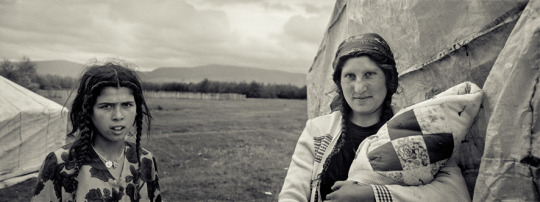



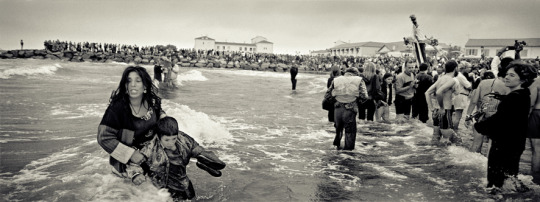

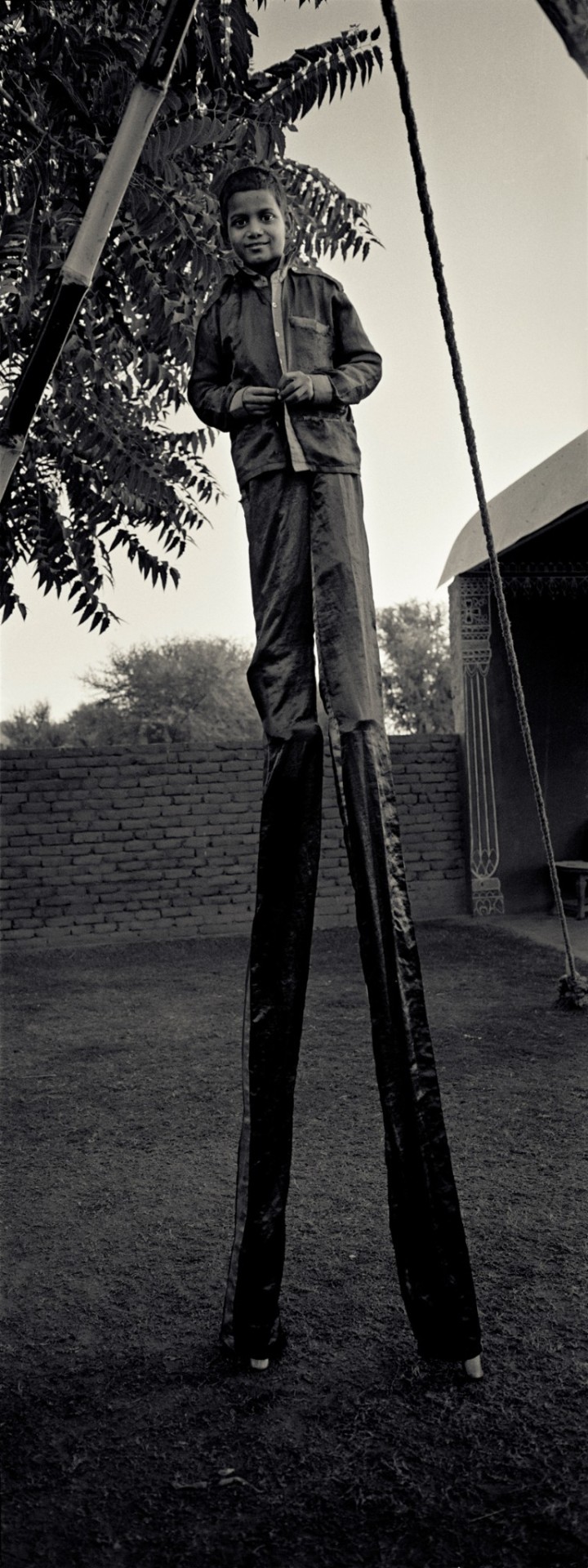
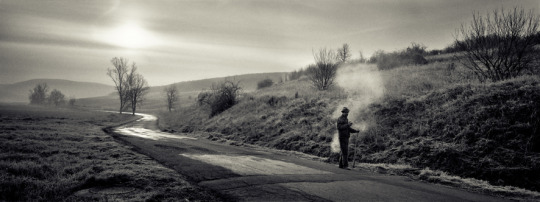
"Between 2000 and 2006 I together with writer Cia Rinne undertook travels in seven different countries with a view to gaining an insight into the life of the Roma and the conditions they face. We always tried to spend a considerable length of time among the people whom we wanted to learn about and, if possible, to live with them for a while.
It was our own interest that initially took us to the Roma streets in Hevesaranyos in northeast Hungary, where we spent four months at the home of Magda, an elderly Roma. The other journeys to Romania, India and our travels in Finland came about through personal contact, while in Greece and Russia we were initially assisted by human rights organizations and in France by the Centre de recherches tsiganes in Paris.
These Roma journeys were by no means meticulously planned, and instead the product of a number of coincidences that enabled us to come into contact with the Roma. We endeavored to communicate directly with them. In most countries this was possible, and while in Russia and India we were accompanied on our travels, and thus had willing assistance.
We have frequently been asked what had triggered our interest in the Roma, but we were unable to provide a definitive, let alone exhaustive answer. What is certain is that once we started we were unable to simply stop continuing with the project. The more we found out about the Roma and got to know them, the more our interest in and liking for them grew.
In keeping with the different countries traveled, the photographic body of work is divided into seven series, the sequence of which roughly corresponds to the chronology of our journeys"
#joakim eskildsen#photography#culture#art collective#photomagazine#art#london#bnwphotography#photojournalism#ethnography
12 notes
·
View notes
Text

Le 31 juillet 1944, Antoine de Saint-Exupéry disparaissait en vol. Il avait 44 ans. Le Petit Prince ? "Il n'est pas un livre plus universellement estimé sur tous les continents." Ce livre, qui passe pour être le plus lu après la Bible, est traduit dans quelque 270 langues et dialectes. Arménien, asturien, bengali, biélorusse, birman, cinghalais, hindi, kabyle, khmer, lapon, quechua, tamoul, tibétain, tsigane, ourdou et autres langues, avec parfois quelques aménagements: dans l'édition en bambara (Mali), 'le Petit Prince' a la peau noire. S'ajoutent à cela les nombreuses éditions pirates qui font la joie des collectionneurs. Contrefaçons pas toujours orthodoxes (en noir et blanc), toujours infidèles, mais ô combien révélatrices: jamais aucun autre écrivain n'a touché tant d'êtres humains, toutes cultures confondues.
8 notes
·
View notes
Text
the thing with the word "gypsy" is that I didn't really used to care either; I'm not from an english-speaking country so "gypsy" had no connotation to me and I used to think "better to leave this to the Roma living in English-speaking countries, they know better." But you can't really be left alone on the internet and sooner or later you WILL interact with non-Roma who speak English and in these interacts whenever I was called "gypsy" they always meant it in a pejorative way. Once on here I was told "Roma are hard-working and can be good, yes, they want to work, I like them. They are different from Gypsies. Gypsies are thieves and will steal anything." Like, the distinction being made here is quite clear. Once I was at the club and I made the mistake of telling this white Canadian guy I was half Romani, he then proceded to make degrading comments at me, telling me "dance for me like a Gypsy", other stuff I won't go into details with, but you can see the sexual connotation that "dance for me like a Romni" doesn't carry.
People get the impression that Gypsy is called a slur because (1) it's an inacurrate term, it comes from "Egyptian" and Roma aren't Egyptians, (2) it's sometimes used in a negative way, but it can also be used in a neutral. A lot of people therefore think that it's really far-fetched to say Gypsy is a slur, and that it's just political correctness gone too far. And sure, I'd agree if "Gypsy" was indeed just a neutral-to-pejorative misnomer, but it's not just that. The "gypsy is a slur" line originates from the American Romani community; the vast majority of American Roma came to the USA after the abolition of slavery in Romania. And as they very rightfully point out, "Gypsy" in English is a rough translation of the word "Cigan", "Tsigan", etc. As scholar Ian Hancock pointed out in his book on Romani slavery in Romania, The Pariah Syndrom, "Cigan" wasn't just the name given to Roma in Eastern Europe, it was a legal term used in judicial texts. "Cigan" meant "Slave". "Cigan" was "slave". In the eyes of the law and for 500 centuries, the definition of "Cigan" was "slave". And those slaves were Roma. In Eastern Europe, Roma were called Cigan so that being Romani meant being born a slave, living as a slave, and dying as a slave.
Another word "Gypsy" roughly translates is "Zigeuner". "Zigeuner" is the German translation of "Cigan". Even though it wasn't associated with chattel slavery, it was still a legal term used in judicial texts. "Zigeuner" was a notion used by Nazis to refer to Romani people and people of Romani descent; being a Zigeuner meant being an "asocial" which meant being a criminal corrupting the German blood.
And when Eastern Europeans or Germans use "Gypsy" when speaking English, it's "Cigan"/"Zigeuner" they are translating, not "Roma", because if they meant to say "Roma" (a word that exists in Slavic languages and in German), they would say "Roma", not "Gypsy".
Some people will point out to some Romani communities or individuals who use "Gypsy" to refer to themselves and will use these people as an argument to say that "Gypsy" is not a slur and that saying otherwise is political correctness gone too far, but that's beyond the point, the thing is that a good chunk of the Romani diaspora is rightfully uncomfortable with the word and that pointing at a few Roma who call themselves Gypsy doesn't erase the fact that "Gypsy" carries a pejorative connotation reminiscing of genocide and slavery and is especially degrading when talking about Romani women. I do agree that focusing on "is Gypsy a slur or not?" is very annoying and kind of useless because there are so many other things we could talk about but at this point, the question is, "why do Gadje keep coming back to this particular discourse when they could just move on, accept that Gypsy is pejorative, and then try and do more meaningful things?"
24 notes
·
View notes
Text
Un chaperon rouge avec du caractère!

Sonia Alain.
Le petit chaperon rouge. 204 pages.
ADA Éditions.
Une vieille Tsigane en communication avec des esprits, condamnée à une fin tragique pour avoir découvert la vérité au sujet de sa fille. Une enfant retrouvée dans les bois, devenue plus tard une séductrice avide de vengeance. Un groupe d’hommes aux mœurs vicieuses, semant l’horreur sur leur passage. Un sergent de police acharné, tentant d’endiguer une série de meurtres barbares à caractère sexuel. Un loup rôdant dans la nuit, à la recherche d’une proie délectable.
Mon avis :
Je n’ai pas lu beaucoup de contes interdits, mais celui-ci va être difficile à déloger. C’est définitivement mon préféré! Le personnage principal, le chaperon rouge, on peut l voir grandir et vouloir se venger de son enfance. Elle a perdu deux personnes importantes dans sa vie, tué par des hommes malveillants. Horreur et érotisme sont mise de l’avant pour pouvoir venir à ses fins. J’ai vraiment apprécié ce conte interdit!
Quel conte interdit avez-vous préféré?
2 notes
·
View notes